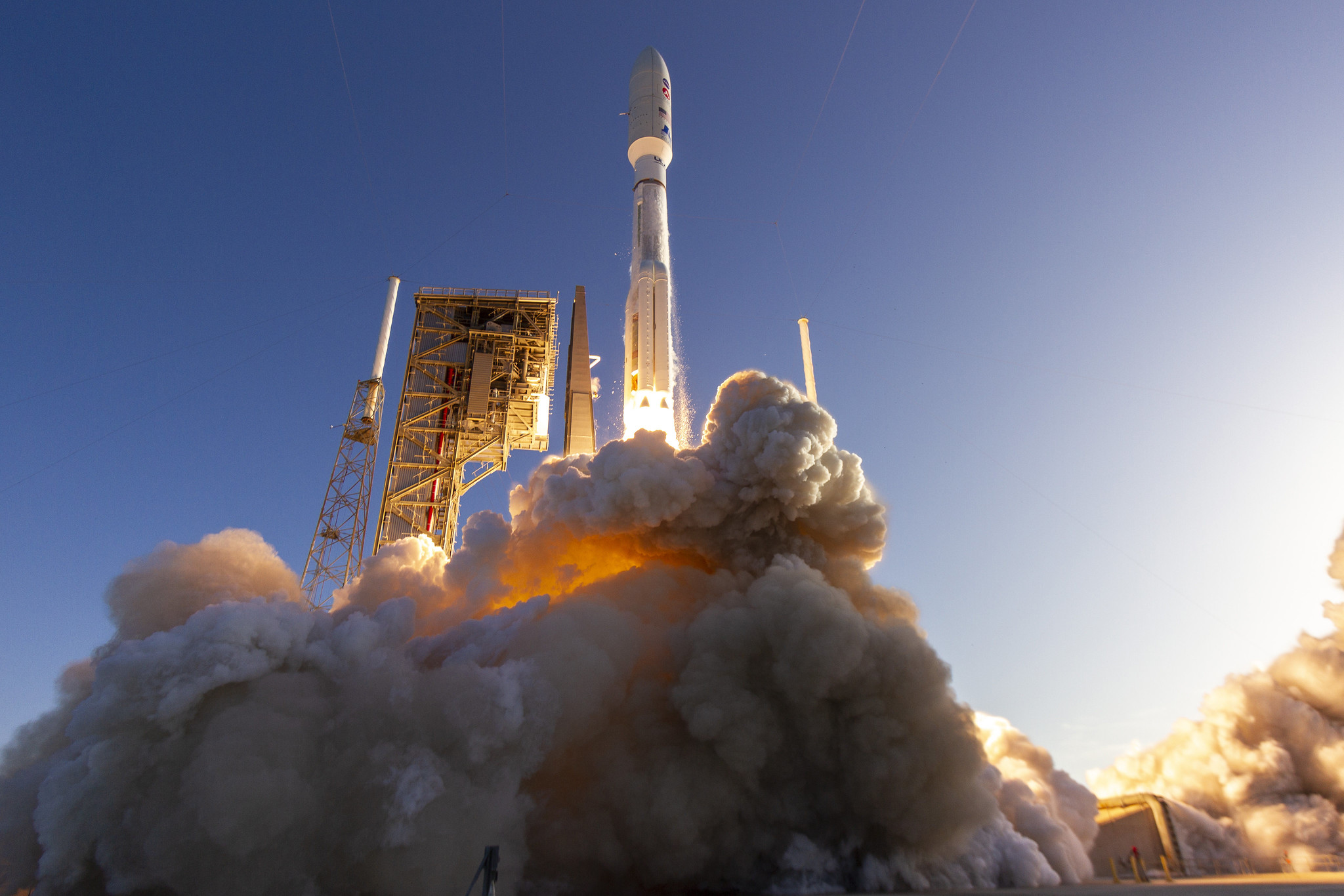A space race to Mars? Not quite — here’s why.
The U.S, China and United Arab Emirates are all headed to Mars.

With the successful launch of NASA's Mars 2020 Perseverance rover Thursday (July 30), three countries now have craft barreling towards the Red Planet.
So is this a Martian space race? Not exactly. But it is an exciting coincidence for planetary science.
The Perseverance rover's launch marks the third mission to blast off for Mars in the last two weeks. First, the United Arab Emirates launched its "Hope" orbiter to Mars atop a Japanese rocket on July 19. The orbiter that will arrive at Mars' orbit in February 2021.
Then, on July 23, China's Tianwen-1 mission launched, sending an orbiter, lander and rover to the Red Planet for their own February 2021 arrival. Finally, today's Perseverance mission lifted off on a mission to land in the massive Jezero Crater on Feb. 18, 2021.
So, with three craft barreling through space towards the Red Planet, it might seem like the most literal definition of a "space race." But, according to NASA Administrator Jim Bridenstine, this is not the case.
Live Updates: NASA's Mars rover Perseverance launch in real time!
China "launched a rover to Mars as well," Bridenstine said Wednesday (July 29) during a news conference. "And certainly, we welcome more science. We welcome more discovery," he said of China. "We encourage them to share what they learn with the entire world, just as NASA shares what it learns with the entire world, so we look forward to them doing that."
Breaking space news, the latest updates on rocket launches, skywatching events and more!
"I hear people frame it as though it's a race. I want to be really clear on this," Bridenstine added. "This is our ninth time to land a robot on Mars. So we've already done this a few times."
Bridenstine emphasized that the U.S., China and UAE missions are launching and landing (or arriving in Hope's case) at similar times but are not "racing" to get there first.
So, why are so many missions launching in such a small window of time?
There is a short period of time every 26 months when Earth and Mars come close together. This window of opportunity allows for the quickest and most efficient journey from Earth to Mars. This window closes mid-August so, if these missions decided to wait, they would have to delay until the next window, which is in 2022.
Related: Here's how NASA's Perseverance rover get to Mars?
This would not only delay the mission and its objectives, but it could end up being extremely expensive. For example, Bridenstine said, if NASA had to delay the Perseverance launch to 2022, they would "have to put this robot into storage," he said. And "it will cost the American taxpayers half a billion dollars."
In fact, there was a fourth mission originally scheduled to launch to Mars this month by yet another team of countries. The European Space Agency (ESA) and Russia's Roscosmos agency had hoped to launch the ExoMars rover Rosalind Franklin to Mars in July, but parachute design problems and the ongoing coronavirus pandemic delayed the flight. That mission will now launch in 2022, ESA and Roscosmos have said.
And Bridenstine noted that not only is Perseverance NASA's ninth mission designed to land on Mars, but the agency also has a number of other, groundbreaking missions underway, including the OSIRIS-REx mission to asteroid Bennu, the New Horizons probe in the Kuiper Belt and a quickly growing commercial crew program. In other words, they're not "competing" for space accomplishments.
Email Chelsea Gohd at cgohd@space.com or follow her on Twitter @chelsea_gohd. Follow us on Twitter @Spacedotcom and on Facebook.

Chelsea “Foxanne” Gohd joined Space.com in 2018 and is now a Senior Writer, writing about everything from climate change to planetary science and human spaceflight in both articles and on-camera in videos. With a degree in Public Health and biological sciences, Chelsea has written and worked for institutions including the American Museum of Natural History, Scientific American, Discover Magazine Blog, Astronomy Magazine and Live Science. When not writing, editing or filming something space-y, Chelsea "Foxanne" Gohd is writing music and performing as Foxanne, even launching a song to space in 2021 with Inspiration4. You can follow her on Twitter @chelsea_gohd and @foxannemusic.
